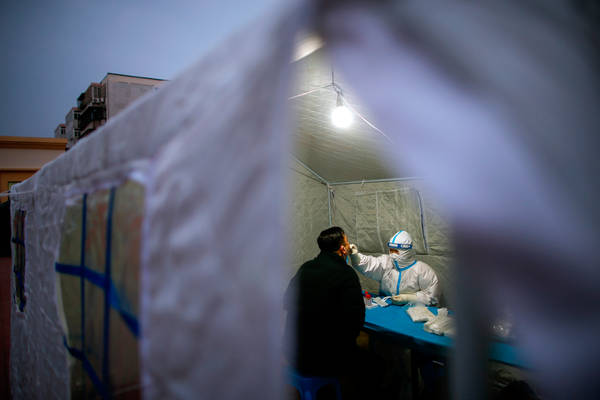A 3.5 million-person Chinese city on the Vietnamese border was placed under lockdown Monday after more than 70 coronavirus cases were identified there in the previous three days.
China, the only major international economy still adhering to a strict zero-COVID policy, is on high alert for potential breakouts as it hosts the Beijing Winter Olympics.
Local officials in the southern Guangxi region’s city of Baise declared on Sunday that no one would be permitted to leave the city, and inhabitants of several areas would be restricted to their houses.
Also Read | Australia to reopen international borders for double vaccinated tourists from February 21
“Citywide traffic regulations will be introduced,” vice-mayor Gu Junyan said during a press conference.
“In general, cars and people are not permitted to enter or leave the city… with stringent personnel control and no needless movement of people.”
Residents of several neighbourhoods in smaller rural cities and counties under Baise’s authority have been placed under rigorous house confinement, while others have been barred from leaving their region, according to Gu.
According to officials, Baise, which is around 100 kilometres (62 miles) from the Vietnamese border, identified its first local case on Friday: a traveller who had returned home for the week-long Lunar New Year vacation.
Also Read | India reports dip in COVID-19 cases, positivity rate drops to 7.25 percent
Since the outbreak, China has constructed a strongly fortified wire mesh barrier around its southern border to keep out illegal migrants from Vietnam and Myanmar, as well as future COVID-19 infections.
Residents are already being tested in large numbers, according to officials.
Since the coronavirus pandemic first surfaced in Hubei province’s Wuhan two years ago, China has deployed severe local lockdowns, mass testing, and contact-tracing apps to try to remove outbreaks as soon as cases are found, saving the country the catastrophic mortality seen elsewhere.
Millions of people were forced to stay at home in numerous Chinese cities in the run-up to the Olympics when instances of both the Delta and Omicron coronavirus strains flared up. The epidemics were generally contained.
Also Read | Australia to fully open its borders to international tourists soon
Following an outbreak of more than 2,000 cases, 13 million people of the northern megacity of Xi’an were placed under severe house confinement for more than a month in December.
Residents complained about food shortages and too strict implementation of lockdown measures by the local government, which prevented patients from obtaining necessary medical care, resulting in deaths in certain cases.
On Monday, China recorded 79 new cases across the country, 37 of which were in Guangxi.
Also Read | Ottawa mayor declares emergency in face of trucker protests
Meanwhile, Hong Kong‘s zero-COVID policy is in jeopardy after a record number of new illnesses were revealed over the weekend, leaving officials rushing to increase testing capacity and warning that virus-control measures may need to be tightened.
China’s boundaries with the rest of the world, including Hong Kong, are mostly impenetrable.







